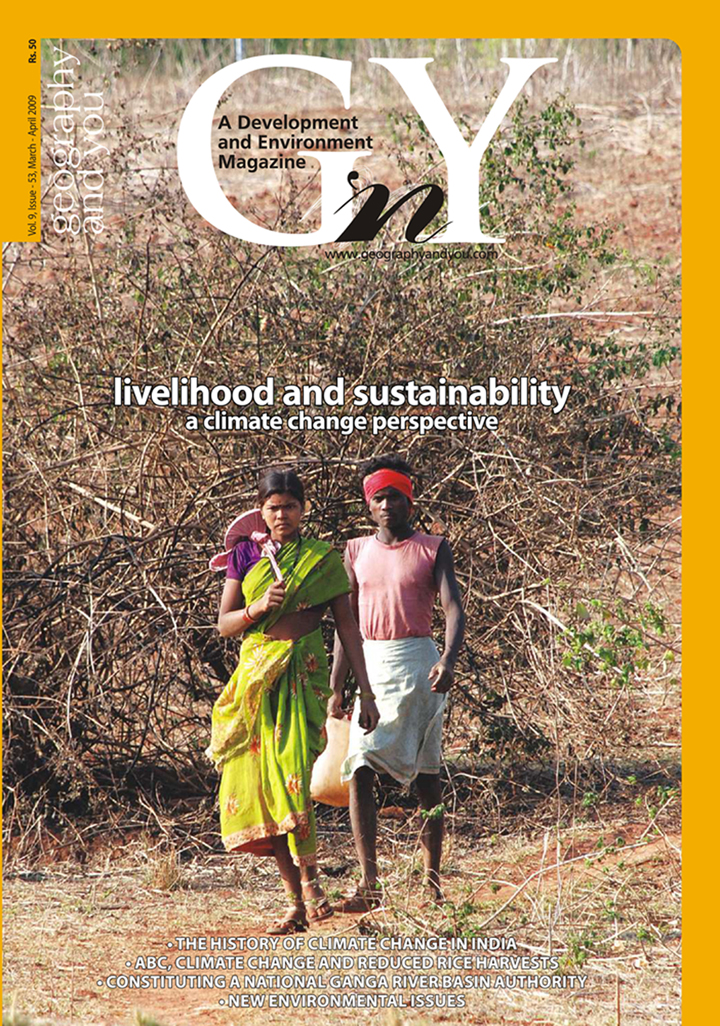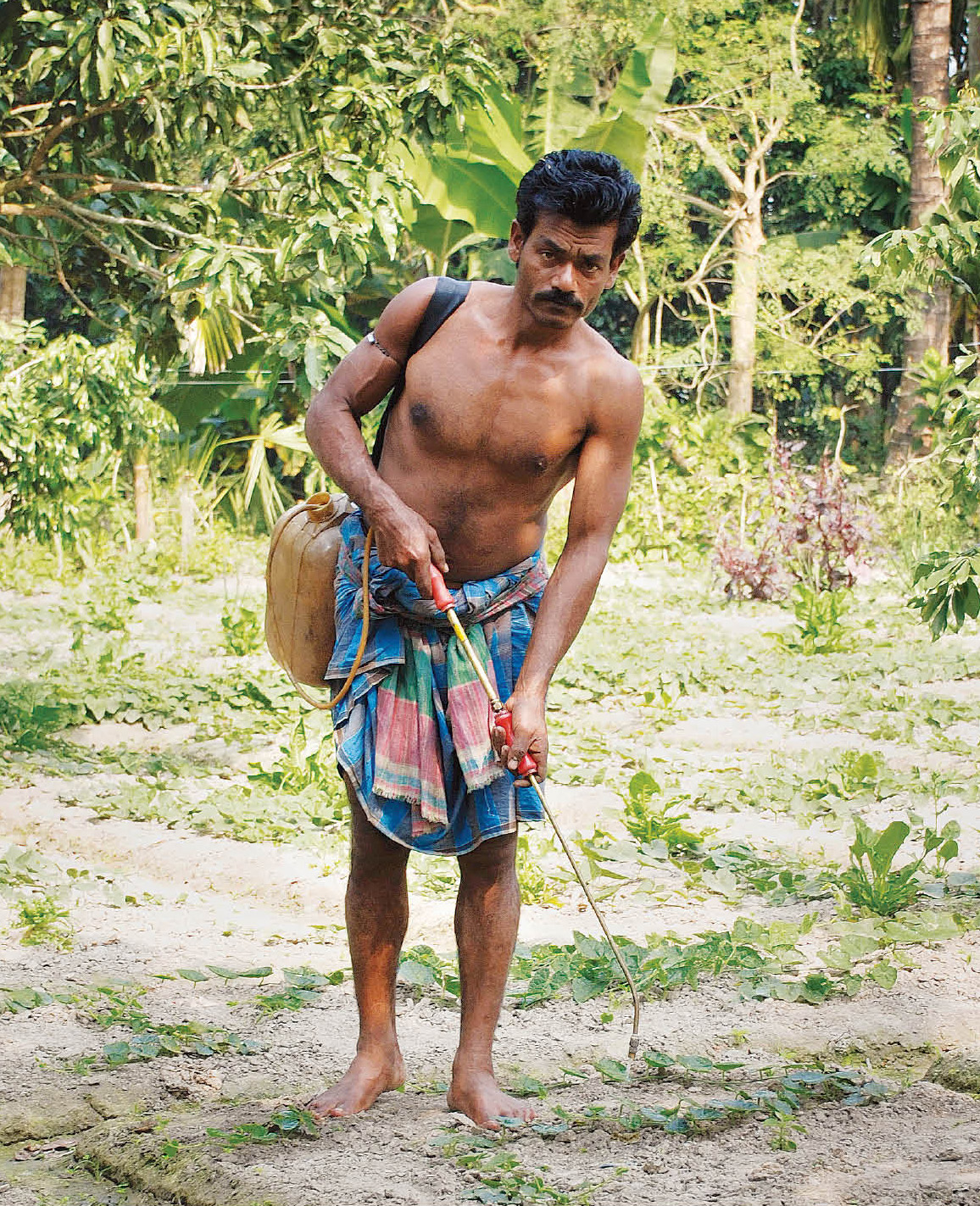
Inside this issue
Overview
Biodiversity, a complex topic covering aspects of biological variation, includes a range of living beings, the relationship among them and with the physical environment; and the sum total of their genetic make up. It encompasses species, ecosystems, and landscape diversity. Biodiversity changes through selective adjustments, from small biological variations, genetic mutations to ecosystem changes and results in novel behaviour among species, and societies.
Tracking Aerosols
Greenhouse gases and its increase in the atmosphere with its consequent warming trend is well documented. Debate concerning global warming is not related to the initial warming, which is inevitable, but the later response in terms of added moisture, sequestration by oceans, response from changes in cloud cover - all unknown with an increasing order of uncertainty.
Traveller’s Diary
Anticipating the customary fog would play havoc with the flight schedules this winter we cleverly booked our travel to Chennai by the Tamil Nadu Express of the fourth of January to discover that we did not fare any better. The train took a beating soon after Delhi - woke up to a chilly morning at Gwalior, six hours late and reached Chennai on the sixth at 1.30 pm.
Livelihood Implications
Of India’s more than one billion people, about 68 per cent are directly or indirectly dependent on agriculture even today. Despite rapid technological interventions, about two thirds of India’s agricultural area remain rainfed and vulnerable to present day climate variability. The implications of climate change is yet not very clear, although scholars agree that global climate change will lead to greater unpredictability of weather conditions at local levels. This warrants serious deliberations on implications of climate change for agriculture in general and rural livelihoods in particular.
Apprehensions about climate change continue to rise, despite our limited ability to make precise assessments of its impact. This is partly due to the complexity of chemical and physical processes at various scales, and also due to confounding factors from other changes such as air pollution.
Down the Ages
Understanding climatic changes of the Holocene Period (past 11,000 years¬¬¬¬) is crucial to assess the impact of global warming on the Indian environment. In the following discourse we provide an overview of climatic changes over the Indian subcontinent based on instrumental records (1813-2008 AD) and as reported by historians (600 BC-1800 AD), archaeologists (3000–600 BC), mythologists (8,000-3,000 BC) and palaeo-climatologists (prior to 8,000 BC).
Bhoramdeo was once the capital of the illustrious Phani Nagavanshi kings (10th-14th century AD), whose kingdom included the entire Kawardha District. Famed for its early medieval temples - Bhoramdeo, Mandwa Mahal and Chheraki Mahal - and a wildlife sanctuary by the same name, the region encompasses the undulating Maikal hills, with its dense sal forests and meandering waters of river Sankari.
Cleaning the Ganga
The Ganga basin is one of the 14 major river basins in the country. It covers 26 per cent of India’s landmass and constitutes 43 per cent of irrigable land area. The basin has a population of more than 500 million, making it the most populated river basin in the world.
Fact File
Rice is grown in range of eco-systems under varying climatic and hydrological conditions - from waterlogged, and irrigated to rainfed situations. Based on the levels of productivity, the status of rice across the nation has been classified under five categories, purpoting analysis.
In Conversation
General N C Vij, Vice Chairman, National Disaster Management Authority (NDMA), is a highly acclaimed military strategist and recipient of several awards for his exemplary service towards the nation. Bold and imaginative, his vast hands-on experience in disaster management has catapulted the five year old Authority to new heights. Speaking to the editor, General Vij, outlined the roadmap prepared to combat disasters, especially in the wake of the new experiences gathered from the successful management and rehabilitation of the victims of the Kosi floods.
Shri G Mohan Kumar, Chairman, The Marine Products Export Development Authority (MPEDA), in conversation with the editor, affably offered insights on issues of sustainable livelihood and outlined mechanisms to increase the export potential of breeding exotic and ornamental fish. He spoke in detail about a new initiative launched by MPEDA to promote ornamental fish farming as a livelihood opportunity. Optimistic about its success, Shri Kumar felt such schemes have the potential to reach every home and office in the country as well as internationally.
In brief
Dear readers, Interacting with reputed scholars working on various issues of climate change in India it was alarming to note that water and agriculture - both vital components for sustainable livelihoods, is projected to be the most vulnerable to warming trends. The rapid melting of the Himalayan g

